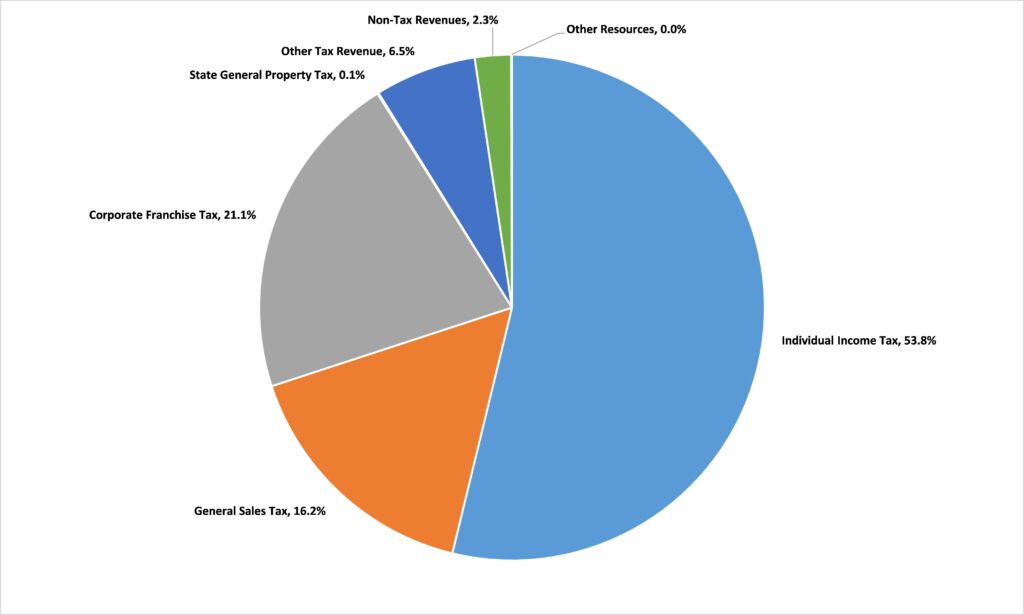Minnesota’s $9.3 billion dollar surplus is largely due to higher forecast income tax collections
The question of what to do with Minnesota’s forecast state government budget surplus of $9.3 billion is dominating political and policy discussion in the state right now. Such a decision must be based on a firm grasp of the actual facts. When people say things which are in opposition to these facts, we must call them out on it.
Last month, Sen. Omar Fateh (DFL) tweeted:
This is false.
Looking at the February forecast, we can see that the $9.25 billion figure comes from the difference between forecast Total Revenues and Total Expenditures for FY 2022-23, with adjustments for the Budget Reserve, Cash Flow Account, and Stadium Reserve (p. 7). We can also see how those forecast revenues break down (p. 8). If we compare this breakdown of forecast revenues for FY 2022-23 with that from the end of the session last summer (p. 9 in the November Forecast), we can see where the revenue side of this surplus comes from, as shown in Table 1.
Table 1: FY 2022-23 General Fund Revenues End-of-Session 2021 vs February 2022 Forecast Comparison

Table 1 shows that, for example, the forecast for General Sales Tax revenues in FY 2022-23 rose by $1.0 billion between the end-of-session last summer and the February forecast. The last column shows that this accounted for 16.6 percent of the forecast increase of Total Tax Revenues ($6.2 billion). Most significantly, however, we see that higher Individual Income Tax receipts account for 55.1 percent of the increase in the forecast for Total Tax Revenues. Sen. Fateh is wrong.
Figure 1 breaks down the sources of the increase in forecast Total Revenues — $6.4 billion — from the end of session to February. Again, we see that the main contribution comes from the increase in forecast Individual Income Tax collections — 53.8 percent. Increases in forecast Corporate Franchise Tax revenues come a distant third, accounting for 21.1 percent of the increase forecast for Total Revenues. Again, Sen. Fateh is wrong.
Figure 1: Contribution to increase in forecast FY 2022-23 Total Revenues from End-of-Session to February Forecast

This is a pretty transparent tactic from Sen. Fateh. If you say that the surplus is a result of corporations paying more in tax, there is probably less appetite for tax cuts than if you point out the facts, which is that this forecast surplus is actually going to come from the pockets of ordinary, hard working and hard pressed Minnesotans in the form of income tax payments.
That is why we should Give It Back to them in the shape of permanent tax rate cuts.